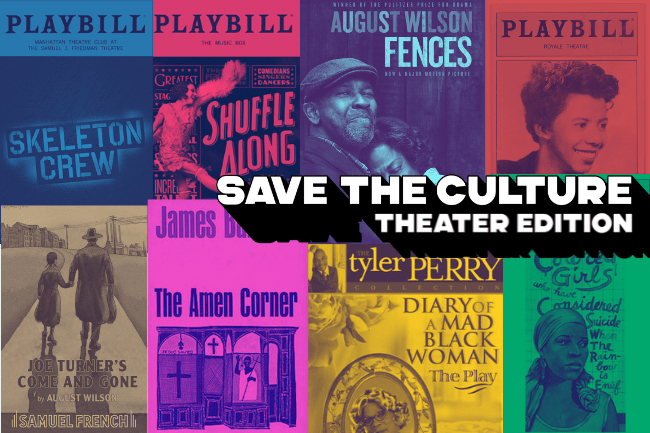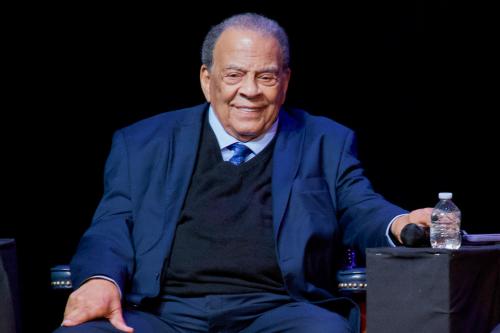Remember when time capsules were a thing?
For the uninitiated, groups of (mostly) students nationwide would accrue the items they felt best represented their era, stow said items in a container of some sort, and hide said container to be one day discovered by future generations as evidence of how we once did things on planet Earth.
Think of this, our SAVE THE CULTURE series, as a modernized version of the time capsule. In 2025, a quarter of the way into this pivotal century and nearly 100 years since the iconic Harlem Renaissance — an era that profoundly shaped Black artistic expression and cultural identity — this project feels especially urgent.
Throughout the summer, our editorial team will be designating 20 (or so) of the works most essential to understanding the Black American experience, in genres ranging from film and television to music and literature, and so much more in between. By spotlighting these landmark creations, we aim not only to preserve and honor the rich legacy of Black culture, but also to inspire ongoing dialogue, foster greater appreciation, and provide future generations with a vibrant record of how our culture thrived at this defining moment in history.
African American stage plays are not simply works of art — they are many times living records of a people’s struggles, triumphs, and unbreakable spirit. They chronicle history, challenge stereotypes, and assert the dignity of Black life.
From the first publicly performed plays by Black women in the early 1900s to contemporary works exploring modern identity, Black theatre has shaped American theatre and influenced global cultural conversation time and time again.
Some of plays from this Save the Culture: Theatre list have broken box office records; others never reached Broadway. But don’t get it twisted, they still reshaped the way we all tell stories. They are a critical part of a cultural inheritance we cannot afford to lose.
Without further ado, we present our time capsule of 20 plays — each one a milestone, a mirror, and a blueprint for the future. We sat down with Dr. Khalid Y. Long, associate professor of theatre arts at the Chadwick Boseman College of Fine Arts, to develop this list of stage plays that have impacted Black culture in some monumental ways.
1. A Raisin in the Sun – Lorraine Hansberry (1959)
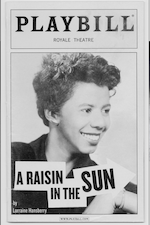
Written in the shadow of segregation, Lorraine Hansberry’s masterpiece follows the Younger family as they consider moving into an all-white neighborhood with money from a life insurance check.
Its debut marked the first time a Black woman’s play appeared on Broadway. Beyond theatre, “A Raisin in the Sun” became a cultural touchstone for the civil rights era, humanizing the economic and emotional tolls of racism, housing discrimination, and generational wealth gaps that persist today.
“Hansberry opened the door for Black narratives in mainstream theatre — and she did it unapologetically.” -Long
2. Fences – August Wilson (1985)
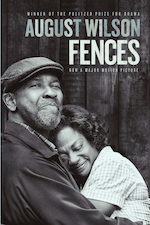
The sixth play in August Wilson’s monumental 10-part “Pittsburgh Cycle,” “Fences” centers on Troy Maxson, a former Negro League ballplayer who struggles with fatherhood and the limits placed on his life. It won the Pulitzer Prize and became a defining portrayal of Black masculinity and generational trauma. Young audiences still connect with its themes of deferred dreams and strained family bonds.
“Wilson brought people to the theatre who had never seen themselves there before.” -Long
3. The Piano Lesson – August Wilson (1987)
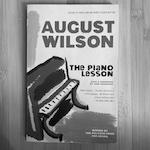
This Pulitzer-winning play examines a family’s debate over selling a piano engraved with the faces of their enslaved ancestors. It reframed the conversation about heritage — not as nostalgia, but as living responsibility. It challenges a generation raised in consumer culture to consider what parts of history should never be sold.
4. Purpose – Broadway Premiere (2025)
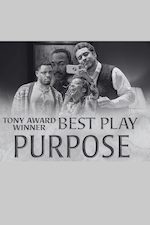
Currently on Broadway and produced by Howard’s very own Phylicia Rashad (B.F.A. ’70), dean emerita of the Chadwick Boseman College of Fine Arts, “Purpose” explores Black ambition, generational responsibility, and the pursuit of legacy. Its very arrival on Broadway proves that Black narratives remain central to American storytelling.
5. For Colored Girls Who Have Considered Suicide/When the Rainbow Is Enuf – Ntozake Shange (1976)
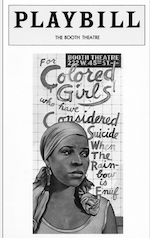
A choreopoem of poetry, music, and dance, “For Colored Girls” breaks away from conventional theatre to center the experiences of Black women. It expanded the form of theatre itself, influencing spoken word and performance art for decades.
“It’s raw, honest, and structurally daring — essential for understanding Black womanhood on stage,” explained Long.
6. Black Nativity – Langston Hughes (1961)
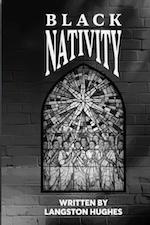
Langston Hughes’s gospel retelling of the Nativity story is a joyous celebration of faith and cultural tradition. Howard University’s Chadwick Boseman College of Fine Arts keeps the tradition alive through annual performances. Merging sacred storytelling with African American musical traditions, it remains a cultural anchor, linking generations through song and ritual.
7. Skeleton Crew – Dominique Morisseau (2016)

Set in a Detroit auto plant facing closure, “Skeleton Crew” follows workers balancing survival and dignity. The play captures the economic struggles of the Black working class during the Great Recession. With new labor movements rising, its relevance has only grown.

8. Rachel – Angelina Weld Grimké (1916)
One of the first plays by a Black woman to be publicly performed, “Rachel” confronts racism so directly that the main character decides not to have children. A protest in theatrical form against the violence of Jim Crow America, its frank depiction of racial trauma foreshadows current conversations about intergenerational harm.
9. Deep Azure – Chadwick Boseman (2005)
Let’s discuss Howard’s own Chadwick Boseman. While Boseman wasn’t known for theatre publicly, that was a different story in the halls of Howard University, where Chad was a spoken word artist and theatre kid through and through. Before Hollywood stardom, Boseman helped shape hip hop–infused theatre at Howard.

Based on a true story, “Deep Azure” is set on the campus of Howard University, and it dives into the aftermath of a police killing. In this Hip Hop theater a young woman determined to uncover the truth behind the death of her beloved boyfriend, Deep. The piece has a rhythmic spoken word tone that takes its audience on an emotional and cathartic ride.
“He was a product of Howard’s program — an actor of depth who also helped shape a new theatrical language,” said Long. His work has impacted the very fabric of the many, many theatrical heavyweights that have shared his alma mater.
10. A Sunday Morning in the South – Georgia Douglas Johnson (1925)

This short but potent drama depicts an ordinary morning shadowed by the threat of lynching. Part of Georgia Douglas Johnson’s anti-lynching plays, “A Sunday Morning in the South” quietly documented everyday Black vulnerability in the South. Its minimalism makes its message impossible to ignore.

11. Shuffle Along – Noble Sissle and Eubie Blake (1921)
One of the first Broadway musicals written and performed entirely by African Americans, “Shuffle Along” revolutionized the industry. The musical broke barriers for Black performers and composers, influencing the Harlem Renaissance. Today, it’s a reminder that innovation often comes from the margins.
12. Mulatto – Langston Hughes (1935)
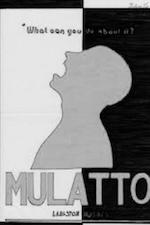
Hughes’s early Broadway play about a biracial man in the Jim Crow South sparked controversy for its themes of racial identity and violence and challenged audiences to face America’s contradictions on race. The play still resonates as America wrestles with mixed-race identity and colorism.
13. Les Blancs – Lorraine Hansberry (1970)

Completed after Hansberry’s death, this drama set in a fictional African colony interrogates colonialism and revolution. Further, it expanded the scope of African American theatre to global liberation struggles and provided a Pan-African lens on resistance. Further, it expanded the scope of African American theatre to appeal to a more global audience where people from the African diaspora could commiserate about their shared struggles and provided a Pan-African lens on resistance.
14. Funnyhouse of a Negro – Adrienne Kennedy (1964)
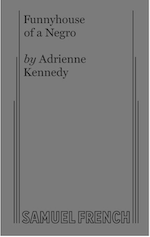
Adrienne Kennedy’s surrealist work explores race, identity, and mental illness was depicted through this narrative. In the process, it opened the door for experimental Black theatre.
15. Diary of a Mad Black Woman – Tyler Perry (2001)
Tyler Perry’s breakout stage play introduced Madea and revived the spirit of the Chitlin’ Circuit. “Diary of a Mad Black Woman” drew massive Black audiences who had long been underserved to the theatre. “Perry, Hansberry, and Wilson are the three pioneers who brought Black people to the theatre in large numbers,” said Long.
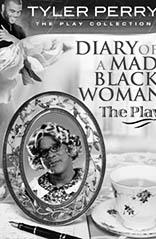
Now, let’s take a moment to discuss Tyler Perry
There’s no doubt that Perry is a pivotal figure in modern Black theatre, even if his work is often debated in academic and artistic circles. In our interview Long placed Perry alongside Hansberry and Wilson as one of the three pioneers who brought large numbers of Black audiences into theatrical spaces.
Long credits Perry with reviving the Chitlin’ Circuit tradition, creating stories that resonated with working-class (mostly southern) Black communities often ignored by mainstream theatre. While critics sometimes dismiss Perry’s plays as “low brow” or overly reliant on stereotypes, Long challenges that view as rooted in classism and anti-Blackness. “How many times do we say Madea reminds me of my own grandmother?” Long questioned, emphasizing that Perry’s popular appeal lies in this authenticity and recognition. Perry’s characters are not stereotypes but archetypes — familiar, everyday figures drawn from real Black life.
16. Joe Turner’s Come and Gone – August Wilson (1986)

Another part of Wilson’s celebrated Pittsburgh Cycle, “Joe Turner’s Come and Gone” is set in a Pittsburgh boarding house in 1911, where newly freed African Americans search for connection and belonging. The play centers on Herald Loomis, a man scarred by the trauma of enslavement under the infamous Joe Turner and follows his journey toward spiritual release and identity. Wilson uses the boarding house as a crossroads, where African traditions, Christian influences, and new urban realities collide. “Wilson gave us a spiritual roadmap for reclaiming identity,” said Long. “He reminds us that freedom is not just about physical liberation, but about reconnecting with who we are at the deepest level.” For modern audiences, the play resonates as a meditation on healing from generational trauma and the ongoing quest for self-definition.
17. How to Catch Creation – Christina Anderson (2019)

Christina Anderson’s “How to Catch Creation” is a contemporary drama that explores art, love, and legacy through the lives of six Black creatives over several decades. The characters wrestle with their pasts — wrongful imprisonment, broken relationships, and missed opportunities — while seeking ways to create new futures for themselves and their communities. Anderson’s work speaks directly to millennial and Gen Z audiences, asking what it means to leave a mark in a world filled with uncertainty.
“Plays like this show us that Black theatre is not only about our past but also about our future,” noted Long. “Anderson is giving young people permission to imagine themselves as creators of the world they want to live in.” Both timely and timeless, the play reminds us that creation — in art, in family, in life — is a radical act of hope.
18. In the Red and Brown Water – Tarell Alvin McCraney (2008)

Tarell Alvin McCraney’s “In the Red and Brown Water” is a lyrical coming-of-age story that blends contemporary realism with Yoruba mythology. The play follows Oya, a young track star whose opportunities are cut short by poverty, family responsibilities, and limited choices. McCraney weaves African spirituality into modern dialogue, reminding audiences that Black identity is both rooted in ancestral tradition and shaped by present realities.
“McCraney shows us that African heritage isn’t something locked in the past — it’s alive, breathing through our stories today,” said Long. For younger audiences, the play offers a fresh way to connect with cultural roots while grappling with universal themes of ambition, sacrifice, and loss.
19. The Amen Corner – James Baldwin (1954)
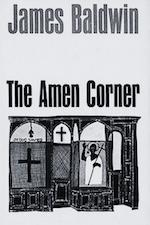
James Baldwin’s only full-length play, “The Amen Corner,” takes place in a Harlem church and examines the costs of faith, leadership, and respectability politics. At its center is Pastor Margaret Alexander, whose authority unravels when her estranged husband returns and her congregation begins to question her choices. The play pushes audiences to confront the intersection of religion, morality, and authenticity in Black life.
“Baldwin dared to ask what happens when the church, which has been a refuge for our community, becomes a source of judgment and constraint,” explained Long.
“Today, in a moment when many young people are re-examining the role of organized religion, Baldwin’s questions about truth, freedom, and faith remain piercingly relevant.”
20. Remembering Aunt Jemima – Glenda Dickerson (1979)
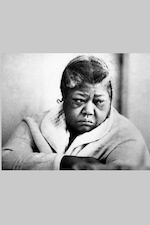
Glenda Dickerson’s “Remembering Aunt Jemima” is a multimedia ritual performance that dismantles the racist “mammy” stereotype while reclaiming the complexity of Black womanhood. Combining theatre, music, and visual art, the piece confronts the history of Aunt Jemima as a commercial caricature and transforms her image into a site of resistance and re-memory.
“Dickerson was a pioneer — she gave us theatre that was both ritual and rebellion.” -Long
As one of the first Black women to direct on Broadway and a leader in Black feminist theatre, Dickerson used works like this to carve out space for Black women’s voices and truths. Her play is not only a critique of representation but also a powerful act of cultural reclamation that still speaks to how we define identity and resist erasure today.

Honorable Mention: The Wiz: The Super Soul Musical “Wonderful Wizard of Oz” - William F. Brown (1975)
“The Wiz,” a disco-inspired retelling of “The Wonderful Wizard of Oz” in the context of contemporary Black American culture, was a major step forward in representation and acceptance of Black stories in American musical theater. It premiered on Broadway in 1975 with then-unknown Stephanie Mills playing Dorothy and lyrics by Charlie Smalls, Zachary Walzer, and Luther Vandross. It became the first mainstream Black musical to win the Tony Award for Best Musical and won seven Tony Awards in total. Geoffrey Holder also made history as the first Black director and costume designer to win Tony Awards for the same show. In 1978, "The Wiz” was adapted into a film with a star-studded cast including Diana Ross as Dorothy, Michael Jackson as Scarecrow, Nipsey Russell as Tin Man, Lena Horne (D.H.L. ’79) as Glinda and Richard Pryor as The Wiz.
“The Wiz” became a centerpiece of Black American households across generations and its astronomical success as an adaptation of a legendary story gave Black people a strong sense of pride and made it an instant classic.
Where is Theatre Headed?
The power of these plays lies in their diversity — in tone, form, and perspective. They are comedic and tragic, realist and surreal, historical and futuristic. Together, they form a body of work that insists on the fullness of Black humanity.
“We cannot let others tell our stories for us. Black theatre is not just a part of American culture — it is American culture.” -Long
To truly save the culture, we must keep producing these works, teaching them in classrooms, and ensuring they evolve with the times. Because as long as these plays are performed, the truths they carry will continue to challenge, inspire, and unite us all.
Keep Reading
-
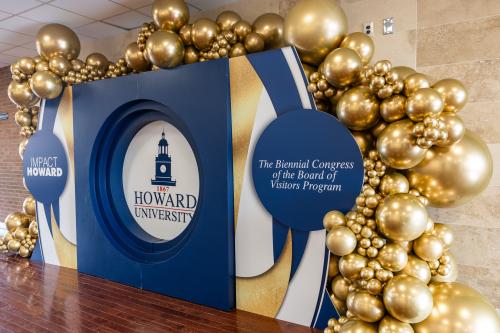 Community
Community“Impact Howard” Inaugurates Biennial Congress of University’s Boards of Visitors
Oct 10, 2025 4 minutes
Are You a Member of the Media?
Our public relations team can connect you with faculty experts and answer questions about Howard University news and events.
Submit a Media Inquiry

